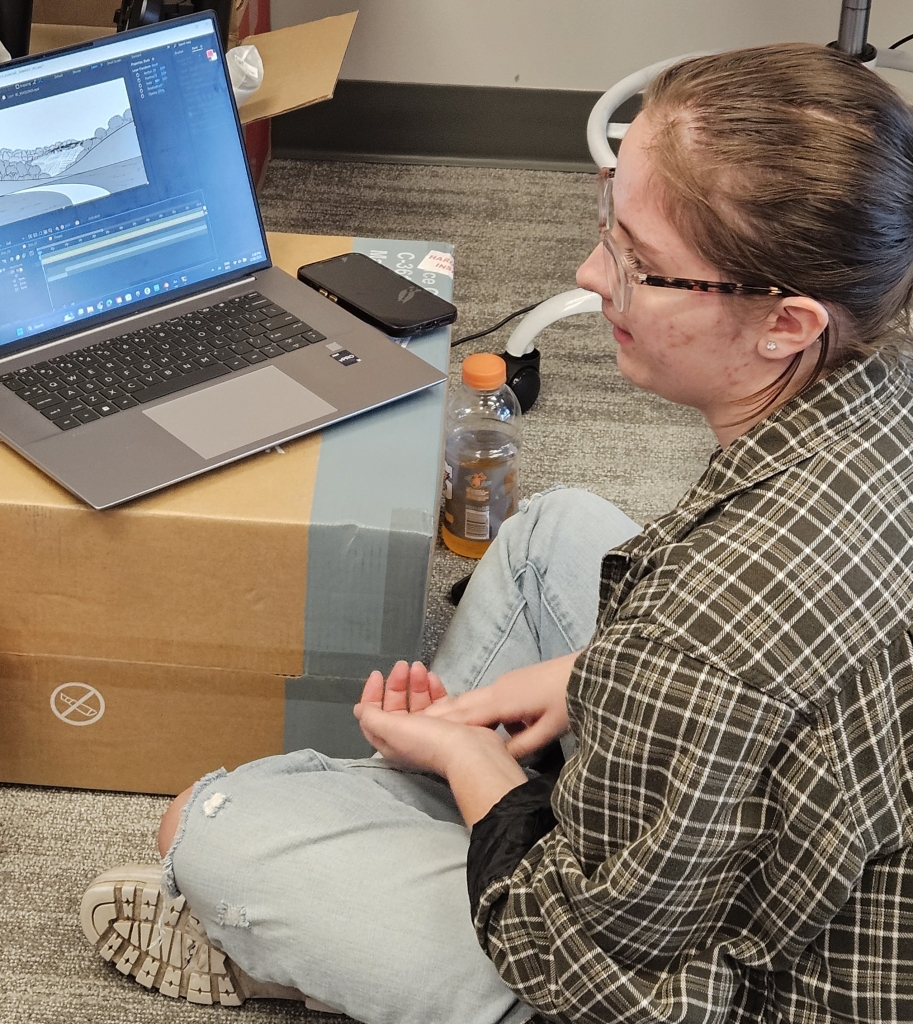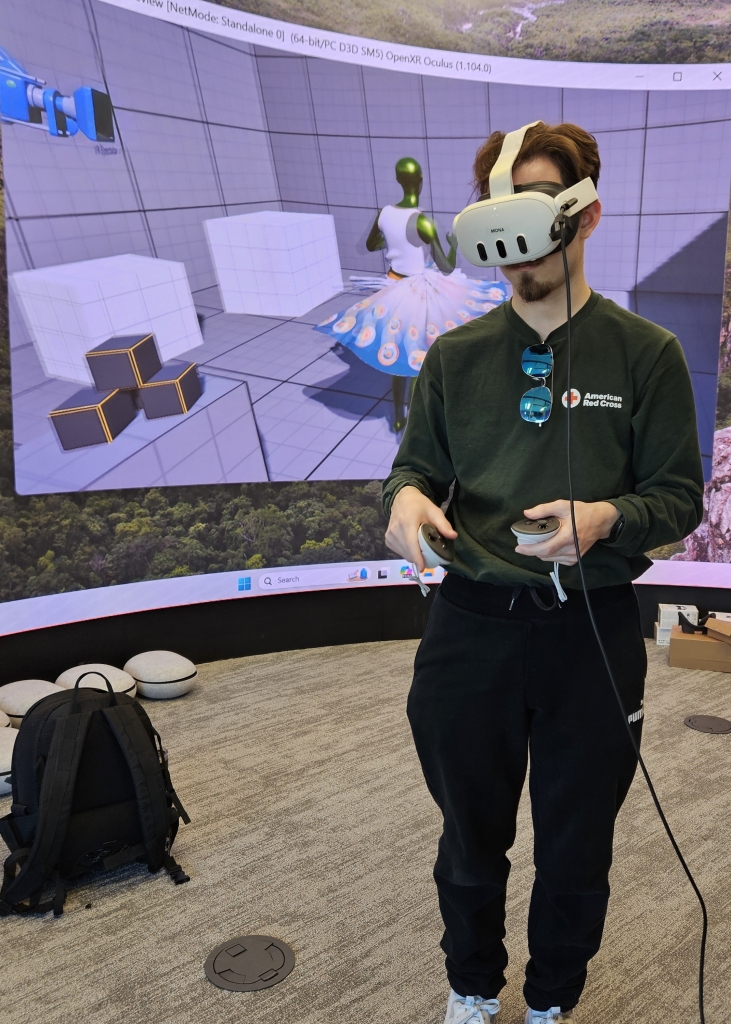Nathan Spencer, April 11, 2025
Students create MetaObjects in ‘virtual reality sandbox’
Undergraduates in the University of Nebraska-Lincoln’s Animating History Lab are gaining valuable creative experience through their research.
The lab was founded by Michael Burton, assistant professor of textiles, merchandising and fashion design, in 2016. It began after Burton was awarded a UNL Arts and Humanities grant to create “Anna,” a short
animation depicting the story of an enslaved woman named Ann Williams. The project was developed in collaboration with associate professor of English and film studies Kwakiutl Dreher, who wrote and directed the screenplay, and professor of history William G. Thomas, who conducted the research and co-wrote the screenplay.

“Anna” and the Animating History films that followed it uncover lesser-known historical stories from Thomas’ book “A Question of Freedom” and share them through short films. Since the lab’s inception, Burton has employed students from UNL’s Undergraduate Creative Activities and Research Experience program to help with the filmmaking process.
Through UCARE, students are paid to work with a faculty member to conduct their own research. Under Burton’s guidance at the Animating History Lab, students collaborate on an Animating History film in the fall semester. In the spring semester, students conduct research on primary sources and develop a MetaObject — a short animation, VR experience, 3D clothing model or similar digital artifact — that will be presented at Student Research Days in April.
Last fall, Animating History students collaborated with Burton on a short called “Perihelion,” which uses William and Caroline Herschel’s “Catalogue of Stars” as a primary source to examine the history of risk-taking in astronomy. With its 8-bit animation style and inclusion of fictional characters, “Perihelion” is unlike any film in the Animating History collection. Upon its completion, Burton will enter it into film festivals with the hope that its success will lead to funding for a feature-length version of the film.
At the beginning of the spring semester, students began research for their own creative projects. They are granted the creative freedom to explore a historical topic that interests them through whatever medium best tells their story. The students participating in research at the Animating History Lab and their projects are as follows:
Aspen Gurr, a sophomore emerging media arts major, is adapting the first chapter of Rachel Carson’s “Silent Spring” into an animated short. Gurr hopes the retelling of this chapter, a cautionary tale of the possible future, which was written to bring attention to the dangers of synthetic pesticides, will lead its viewers to become better informed on the origins of the environmentalist movement.

After visiting the department of textiles, merchandising, and fashion design’s Historic Costume Collection on East Campus, junior EMA major Eva Kramer was inspired to recreate a dress worn by late Lincoln philanthropist Sarah Avery Woods in virtual reality. By using a program called Clo3D, Kramer will digitally sew the garment with realistic physical properties, allowing VR users to see what the dress may have looked like when worn by Woods.
Senior EMA major Na’Taya Moore is creating an animated comic that explores an alternate version of the cartoon “The Jetsons,” where minorities exist and are well-represented. Heavily inspired by writer N.K. Jemisin, Moore hopes to highlight the lack of adequate representation for racial minorities in popular culture.
Kolby Hunt, a sophomore EMA major, will show how Atari, one of the earliest video game consoles, was sold to Warner Communications by its owner, Nolan Bushnell. Through the exploitation of features in Google Slides, Hunt is creating a video game prototype within the program that allows users to follow the story of Atari’s sale by advancing through the levels of a video game.
Animating History students meet weekly in what’s dubbed the “virtual reality sandbox” in Carolyn Pope Edwards Hall. The room, which is scheduled to be open to all students by the end of April, will serve as a creative development lab for students hoping to design their own projects in VR.
On April 15 and 16, UCARE students will present their research at Student Research Days. For Animating History students, this is a rare opportunity to show off a project that they saw through from brainstorm to completion. The interdisciplinary nature of their projects, Burton said, will help them to be well-rounded artists in their careers.





